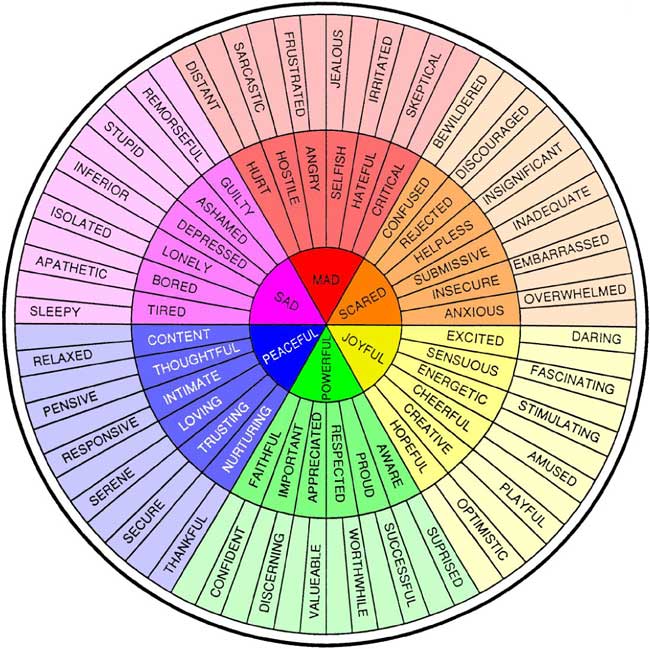In our last blog, we discovered that temperament is a set of characteristics that each child is born with and develops throughout their life. We discussed how it is the foundation for personality. Today we will be looking at the first characteristic of temperament: emotional intensity and reactivity.
 Low Reactors
Low Reactors
Children vary in their emotional intensity. Some children are less intense and may seem less demanding than others. If your child is a “low reactor”, they might tend to be quiet and rarely fuss. They may sleep longer hours and have little trouble adapting to a schedule. They may show emotions with only slight changes in their facial expression, tone, or body posture. These children need a high level of stimulation to get them interested and engaged. Just because these children seem less demanding, though, doesn’t mean they require less effort to parent. Instead, you may find that you have to work harder to attract and hold their attention.
Big Reactors
On the other side of the spectrum are children that are “big reactors”. These children tell the world how they feel in voices and actions that are loud and clear. For example, they may show happiness by crying with delight and may express anger by throwing things, hitting, or biting. Big reactors may also react to physical stimulation intensely. For example, some may not be able to tolerate itchy tags on t-shirts or unpleasant smells and tastes.
Take a minute to think about your own children or the children that you care for, where do they fall in emotional intensity?

Parenting Strategies
Now that you have a better idea of where your child falls on the temperament spectrum, let’s take a look at some parenting strategies for each type. For low reactors, try making things interesting! You can attract your child’s attention by choosing upbeat music or using a dramatic voice while reading. Overall, you want to try to keep things silly and creative. For infants, you may want to create interactive games such as rolling a ball or passing a rattle back and forth. Any games that involve taking turns or physical engagement will help the child become and remain engaged. And remember, if your child has certain interests, follow their lead!
For big reactors, you’ll want to try to keep things calm. Try to keep music, lighting, and the clothes your child wears, soft. Play activities should be fun, but not overstimulating. When your child becomes upset, hold them close and massage their back or rock them. Show that you understand them by validating and naming their feelings. Don’t punish your child for their strong reactions. It’s not that they are overreacting – it’s just who they are. The goal is to help them calm down, feel safe, and teach them how to manage those big feelings and reactions!
Protective and Risk Factors for Emotional Reactivity
Previously, we learned that temperament traits can potentially heighten or diminish a child’s risk for abuse or neglect. Let’s look at how emotional reactivity can produce both positive “protective factors” as well as negative “risk factors”.
Low Reactors When it comes to low reacting children, parents generally think of their protective factor: they are generally easier to care for in most situations. However, the risk factor involved with less intense children is that they may not always voice their needs. Because of this parents and caregivers may have to work harder to ensure their children’s needs are being met.
Big Reactors For children who are big reactors, their intense reactions are a risk factor, as they may seem abrasive and scare other children. They may also be seen as “overreacting”, which can mislead a caregiver into minimizing the true nature of the issue. For instance, this can happen when a child screams at every injury, whether they have small cut or broken bone. On the other hand, children who are big reactors always get their needs met which is their protective factor.
Additional Resources
- Fostering Healthy Social and Emotional Development in Young Children: Tips Sheet
- Free, Parent Toolkit on Emotions!

(function(t,e,n,c){var o,s,i;t.SMCX=t.SMCX||[],e.getElementById(c)||(o=e.getElementsByTagName(n),s=o[o.length-1],i=e.createElement(n),i.type=”text/javascript”,i.async=!0,i.id=c,i.src=[“https:”===location.protocol?”https://”:”http://”,”widget.surveymonkey.com/collect/website/js/RQ7VGCkGPqwMhgyiylM9JPdtzHFtuU633PLjUP_2BBtl4Ew23WzAidn3ecSHOxemMC.js”].join(“”),s.parentNode.insertBefore(i,s))})(window,document,”script”,”smcx-sdk”); Create your survey with SurveyMonkey

